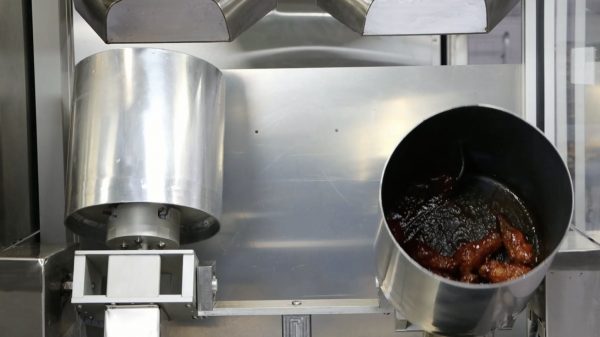A recent Treasury Inspector General for Tax Administration (TIGTA) report highlights a series of little‐known, fraud‐ridden tax credits for biofuel producers. These subsidies are a cautionary case study of how complicated tax credits are often legally and illegally abused. As trillions of dollars in Inflation Reduction Act (IRA) tax subsidies come online, Congress should expect fraud and ballooning costs to continue.
The tax code includes a group of related biofuel tax credits for the production, blending, and use of biodiesel, renewable diesel, second‐generation fuels, and other alternative fuels. The credits provide a $0.50–$1.75 subsidy per gallon of qualifying fuel. The tax credits generally offset fuel excise taxes and then are available as a credit against income taxes. Some provide a “refundable” credit for a subsidy in excess of tax liability. The IRA extended the biofuel credits through 2024 and created a new credit for sustainable aviation fuel.
Since Congress created the first biofuel credit in 2004, such credits have been subject to legal exploitation and illegal fraud. The tax credits complement other subsidies and blending requirements in the renewable fuel standards program, creating a complex web of lucrative programs administered by multiple agencies with poor oversight and insufficient interagency cooperation. This has led to a staggering amount of theft.
In a brazen account of tax fraud, the operators of Washakie Renewable Energy were sentenced to prison in 2023 for a staggering $1 billion biofuel tax credit conspiracy. Over six years, the Internal Revenue Service (IRS) paid out $511 billion in fraudulent tax credits and stopped hundreds of billions more in what the TIGTA report calls “one of the largest fraud schemes in US history.” In reporting on the Washakie case, Bloomberg noted that “by 2017 more than 30 people had been accused of defrauding the IRS in biodiesel tax credit scams.”
In another case, a Colorado man was found guilty of claiming $7 million of biodiesel tax credits for renewable fuel that was never produced. Another story chronicles multiple indictments “for orchestrating a $100 million scheme involving the sale of biofuels and fraudulent claims that the fuels were eligible for tax credits.”
Indicative of poor enforcement and difficult administrability, TIGTA found that one‐third of audited taxpayers’ biofuel credits should have been denied due to a lack of appropriate documentation of eligibility. Insufficient documentation accounted for about 12 percent of the dollar value of the credits claimed in the audited sample.
The biofuel credits are also susceptible to legal exploitation. In one case, an unintentional loophole increased the cost of the subsidy program more than 12 times.
Poorly defined terms in the $0.50 alternative fuels credit allowed enterprising oil industry lawyers to claim credits for their normally produced gasoline. Doug Sword explains that because butane qualified as an alternative fuel, “refiners had a legitimate claim on the credits since they typically mix butane, an easily liquefied natural gas, into gasoline to reduce emissions and help engines run smoother in cold weather.”
When government scorekeepers incorporated the butane tax loophole into their estimates, the cost of the alternative fuels subsidy jumped from $555 million to $7.1 billion for a one‐year extension. Had oil companies been able to claim these credits retroactively, taxpayers could have been on the hook for an additional $50 billion. As part of a year‐end spending package in 2019, Congress clarified the law and made the change retroactive, denying the credit to butane‐mixed gasoline.
No End in Sight
The TIGTA report concludes that “with the passage of additional and expanded clean energy tax credits in the IRA, there is even greater incentive to take advantage of biofuel tax credits and make fraudulent claims for biofuel that does not exist or does not qualify for the biofuel tax credits.”
The biofuel tax credits are only one small microsome of the problems that follow in the wake of overly generous, targeted federal tax subsidies. In the past, I’ve written about the problems with the Employee Retention Tax Credit, a pandemic‐era payroll tax subsidy whose cost has ballooned from $77 billion to as much as $550 billion due to a combination of lax rules and outright fraud.
The IRA is estimated to include more than $900 billion in new and expanded energy tax credits over 10 years. Many of the credit programs essentially provide cash subsidies (through tradeable tax credits), often in excess of the cost of producing the energy. For example, a new hydrogen tax credit that one analyst called “the most generous clean hydrogen subsidy in the world” could cover more than 100 percent of the cost of production in some places. Such large subsidies will invariably attract new forms of abuse. In another context, the Department of Energy inspector general has said that the IRA spending and loan programs will create an “unprecedented” level of risk for fraud and financial mismanagement.
Unlike the butane loophole, when Congress and the IRS worked in concert to prevent the worst abuses, the Biden administration has been actively expanding loopholes to increase IRA tax credit eligibility and program costs. For example, under a broad interpretation of electric vehicle subsidies, the credits for leased cars are not subject to Congress’s intended restrictions that apply to consumer‐purchased car battery component sourcing, household incomes, and vehicle prices.
With hundreds of billions—if not trillions—of dollars of technologically and administratively complex tax credits up for grabs, Congress should expect history to repeat itself. Pioneering lawyers will find ways to exploit the rules legally, and less scrupulous actors will use the programs’ complexities to defraud taxpayers.
Every energy tax credit should be repealed. They are economically destructive, have proven enforcement problems, and create unexpected financial risks to federal budgets.
























